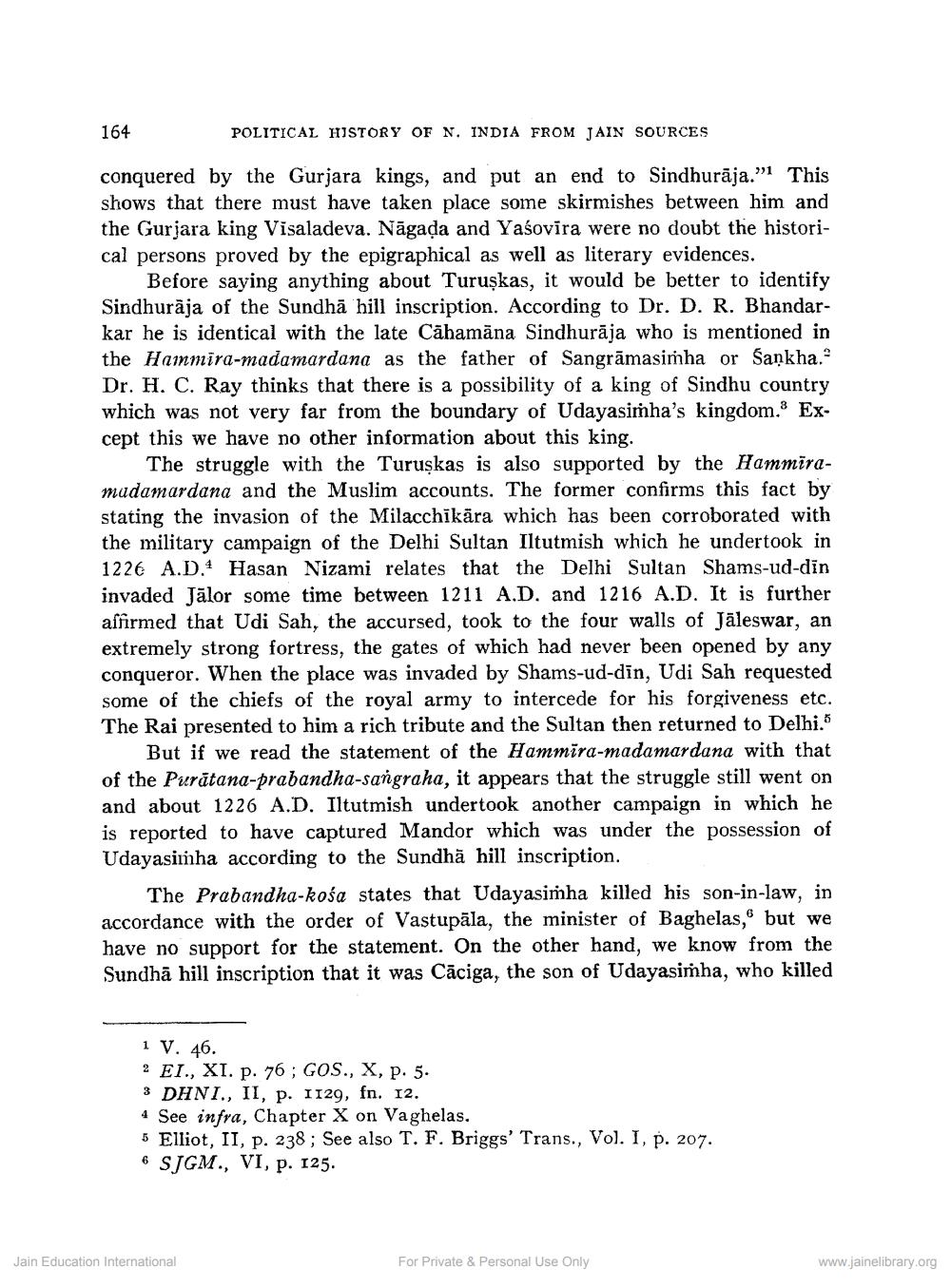________________
164
POLITICAL HISTORY OF N. INDIA FROM JAIN SOURCES
conquered by the Gurjara kings, and put an end to Sindhurāja.” This shows that there must have taken place some skirmishes between him and the Gurjara king Visaladeva. Nāgada and Yaśovira were no doubt the historical persons proved by the epigraphical as well as literary evidences.
Before saying anything about Turuskas, it would be better to identify Sindhuraja of the Sundhā hill inscription. According to Dr. D. R. Bhandarkar he is identical with the late Cāhamāna Sindhurāja who is mentioned in the Hammira-madamardana as the father of Sangrāmasimha or Sankha. Dr. H. C. Ray thinks that there is a possibility of a king of Sindhu country which was not very far from the boundary of Udayasimha's kingdom. Except this we have no other information about this king.
The struggle with the Turuskas is also supported by the Hammiramadamardana and the Muslim accounts. The former confirms this fact by stating the invasion of the Milacchikāra which has been corroborated with the military campaign of the Delhi Sultan Iltutmish which he undertook in 1226 A.D.4 Hasan Nizami relates that the Delhi Sultan Shams-ud-din invaded Jālor some time between 1211 A.D. and 1216 A.D. It is further asfirmed that Udi Sah, the accursed, took to the four walls of Jāleswar, an extremely strong fortress, the gates of which had never been opened by any conqueror. When the place was invaded by Shams-ud-din, Udi Sah requested some of the chiefs of the royal army to intercede for his forgiveness etc. The Rai presented to him a rich tribute and the Sultan then returned to Delhi."
But if we read the statement of the Hammira-madamardana with that of the Purātana-prabandha-sangraha, it appears that the struggle still went on and about 1226 A.D. Iltutmish undertook another campaign in which he is reported to have captured Mandor which was under the possession of Udayasimha according to the Sundhā hill inscription.
The Prabandha-kośa states that Udayasimha killed his son-in-law, in accordance with the order of Vastupāla, the minister of Baghelas, but we have no support for the statement. On the other hand, we know from the Sundhā hill inscription that it was Cāciga, the son of Udayasimha, who killed
1 V. 46. 2 EI., XI. p. 76; GOS., X, p. 5. 3 DHNI., II, p. 1129, fn. 12. 4 See infra, Chapter X on Vaghelas. 5 Elliot, II, p. 238; See also T. F. Briggs' Trans., Vol. I, p. 207. 6 SJGM., VI, p. 125.
Jain Education International
For Private & Personal Use Only
www.jainelibrary.org




